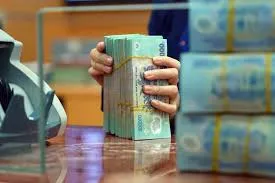
Despite this, capital flows into the economy remain "very weak." This paradox prompts a closer examination: why are banks increasing deposit mobilization interest rates, and why isn't this translating into robust economic activity?
Currently, five banks in Vietnam are under special control: Ocean Bank, Construction Bank, Petroleum Bank, Dong A Bank, and, as of October 2022, SCB. Being placed under special control implies that a bank is essentially failing—it cannot meet its obligations, is unable to pay its debts, and has negative charter capital. In such scenarios, the State Bank of Vietnam (SBV) must step in to provide relief, either directly or indirectly, to prevent bankruptcy and maintain financial stability.
Direct relief involves the SBV lending capital to these banks to allow them to continue operations and pay depositors. Indirect relief, on the other hand, involves the SBV lending through four state-owned banks—Vietcombank, Vietinbank, Agribank, and BIDV—to support the banks under special control.
While the first four banks have relatively manageable levels of outstanding debt (in the tens of thousands of billions of dong), SCB presents a much larger issue. At the time SCB was placed under special control, its financial report showed total assets of over VND 760,000 billion, with deposits nearing VND 600,000 billion. This means that regardless of the method used, the State Bank must inject a substantial amount of money to temporarily rescue SCB and maintain its operations for a certain period.
When a bank encounters problems, depositors are quick to withdraw their money, despite assurances from the State Bank. In today’s digital age, withdrawals can be done quickly online, allowing depositors to transfer their money to other banks or invest in gold, foreign currency, or real estate if they find deposit interest rates unattractive. This behavior contributes to an excess of available money in the system.
A foreign newspaper highlighted this issue, claiming that the State Bank of Vietnam had injected an amount equivalent to USD 24 billion into the economy. Commercial banks, noticing the volatility in gold prices and exchange rates, have raised deposit interest rates to attract capital. This strategy serves dual purposes: maintaining liquidity and providing funds for speculative activities in gold and foreign currency. This explains why many commercial banks have recently increased their deposit interest rates even though they do not have the capacity to lend more.
The State Bank likely observed the increase in deposits at commercial banks without a corresponding growth in credit, which could lead to more exchange rate speculation. To address this, the State Bank has taken two primary actions. First, the State Bank issued treasury bills with higher interest rates than deposits to absorb excess money. However, these bills only have a 28-day term, meaning they do not fully absorb the excess liquidity. Consequently, exchange rate pressure persists, having increased by 5% since the beginning of 2024. Second, the State Bank has released foreign exchange reserves to sell USD and attract VND. However, to maintain foreign exchange reserves, USD sales have been minimal. To stabilize the financial market, the State Bank may employ additional tools beyond treasury bills and foreign exchange reserves. This could include offering higher interest rates on State Bank deposits to absorb excess liquidity. Essentially, "reducing interest rates will increase the exchange rate," while increasing interest rates can help reduce exchange rate speculation and encourage people to save rather than hoard foreign currency.
To stabilize the financial market in the future, it is crucial to address the surplus of money among the population, clear credit capital flows, and restructure banks under special control. This would allow the State Bank of Vietnam to withdraw its direct or indirect loans, thereby restoring confidence in the banking system and promoting long-term economic stability.
Vietnam's financial market has recently faced a series of complex challenges stemming from both external and internal factors. The Federal Reserve's unexpected decision not to reduce interest rates in 2023 had a significant impact on global financial markets, including Vietnam's. Additionally, geopolitical tensions have driven up gold prices, adding to economic uncertainty.
Internally, issues at SCB have had a significant impact on the exchange rate. When SCB was placed under special control, it triggered a wave of depositor withdrawals and a subsequent liquidity crisis. This situation was exacerbated by businesses manipulating gold prices, leading to further market volatility. Such internal banking problems highlight the need for a comprehensive approach to financial sector reform.
Vietnam's financial market is currently navigating through a period of significant volatility and uncertainty. Addressing the challenges posed by excess liquidity, structural banking issues, and external economic pressures requires a coordinated and comprehensive approach. By implementing strategic reforms and enhancing oversight, the State Bank of Vietnam can foster a more stable and resilient financial system, ultimately contributing to sustainable economic growth.




















